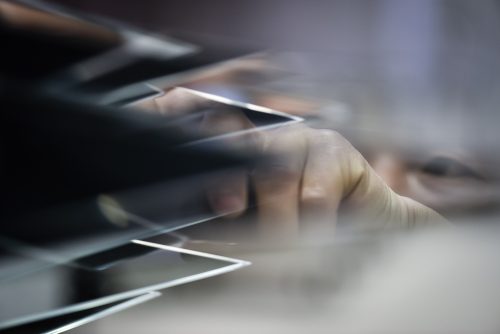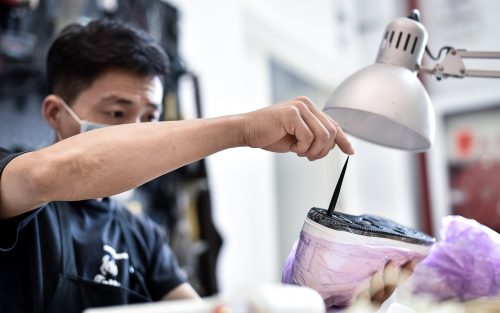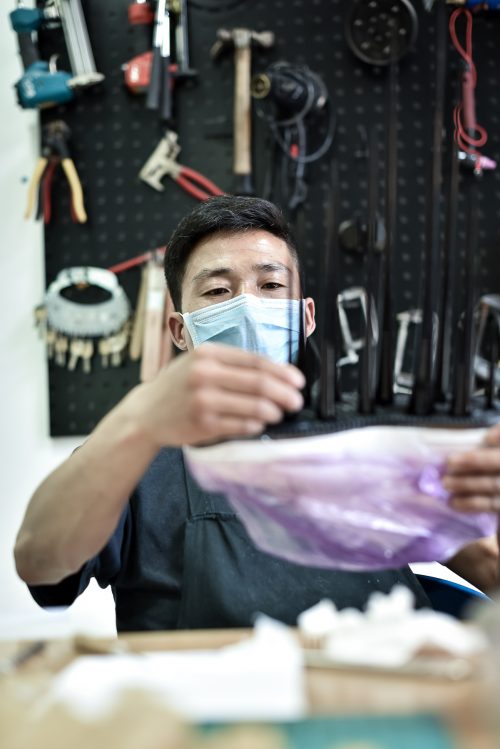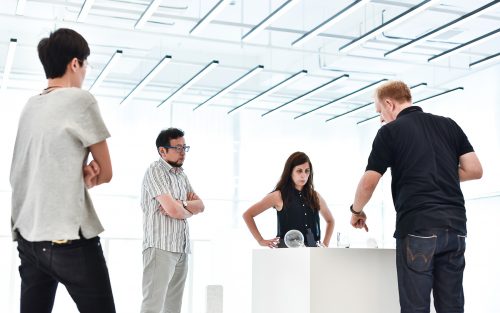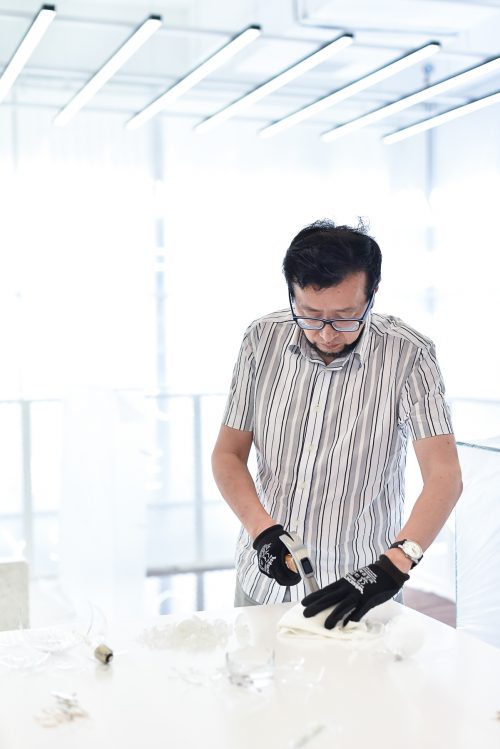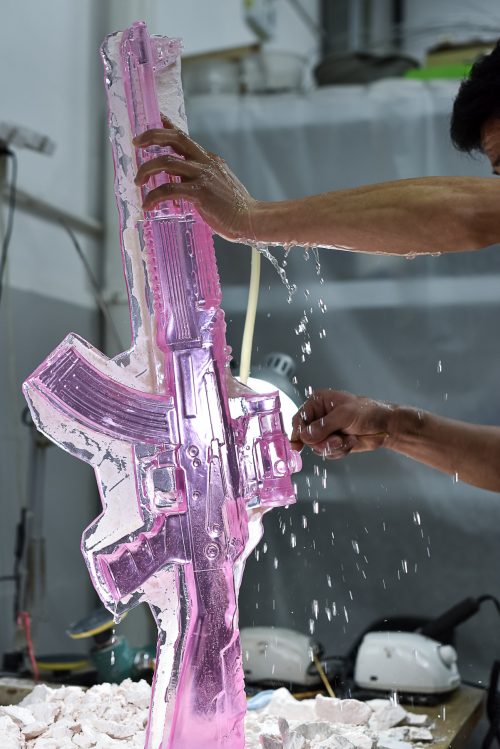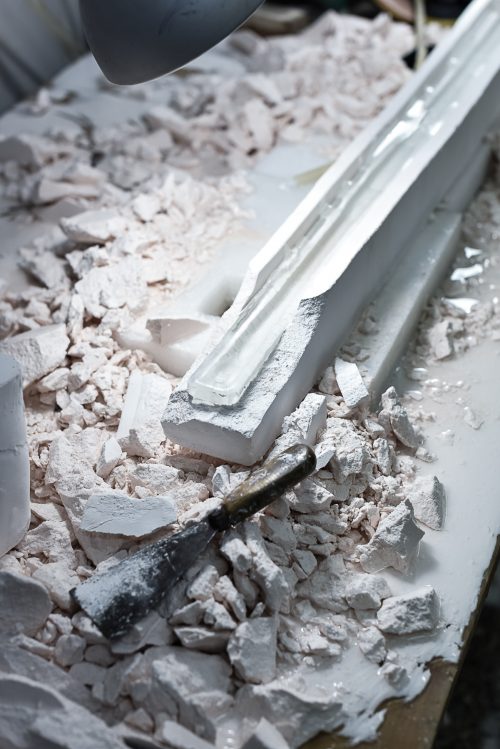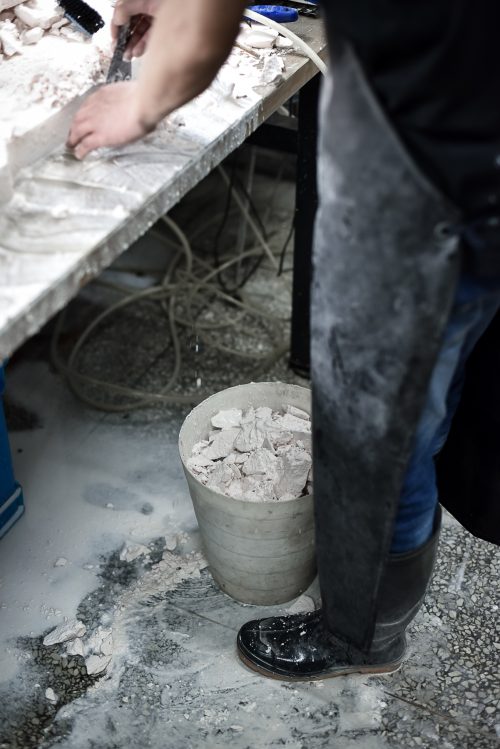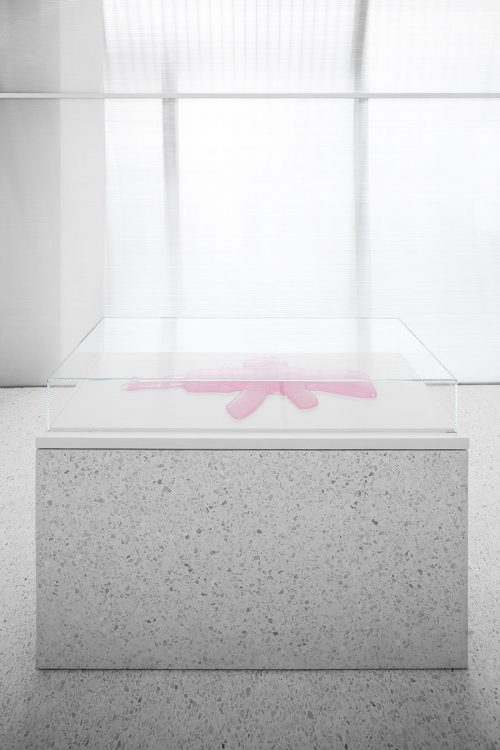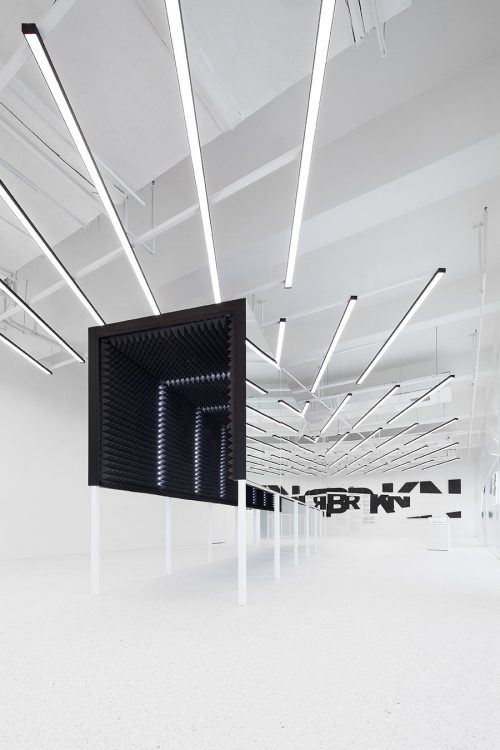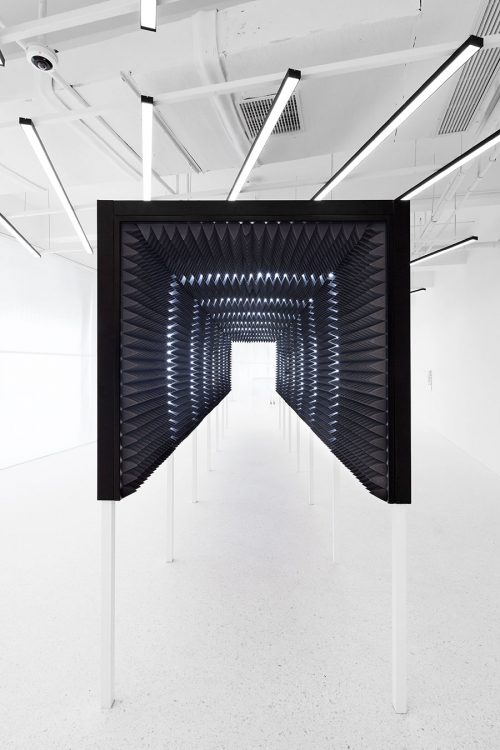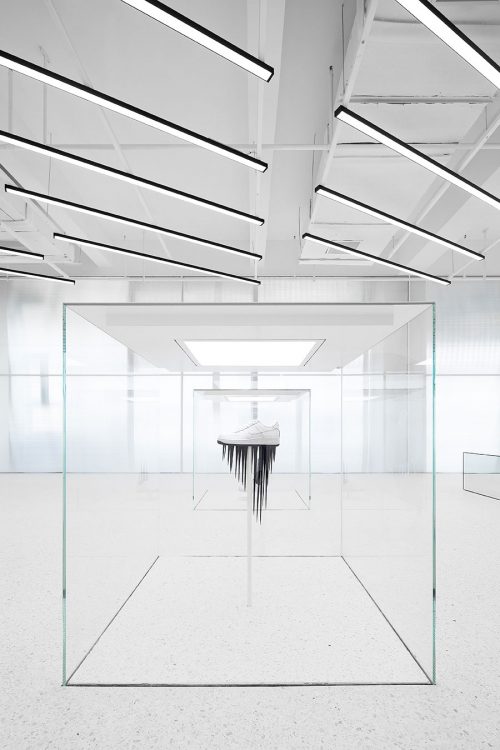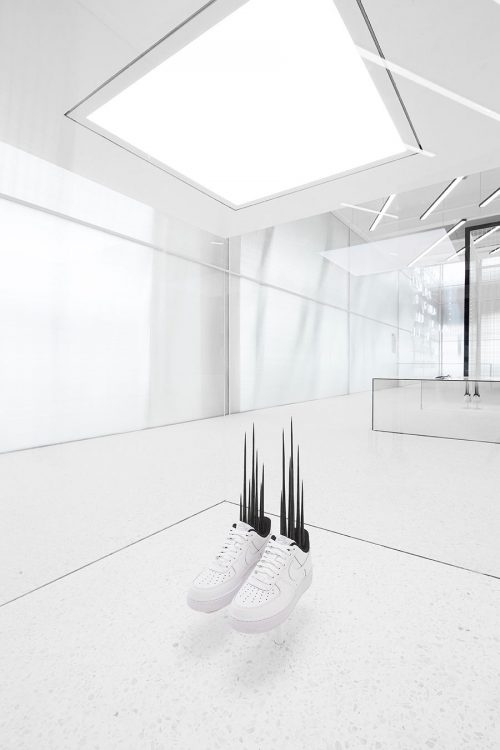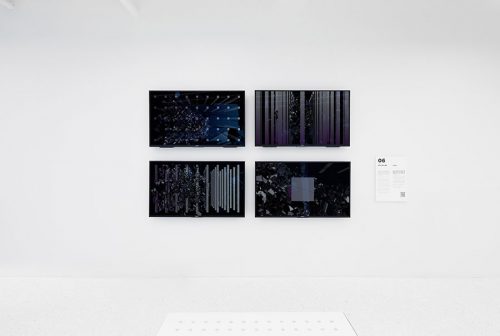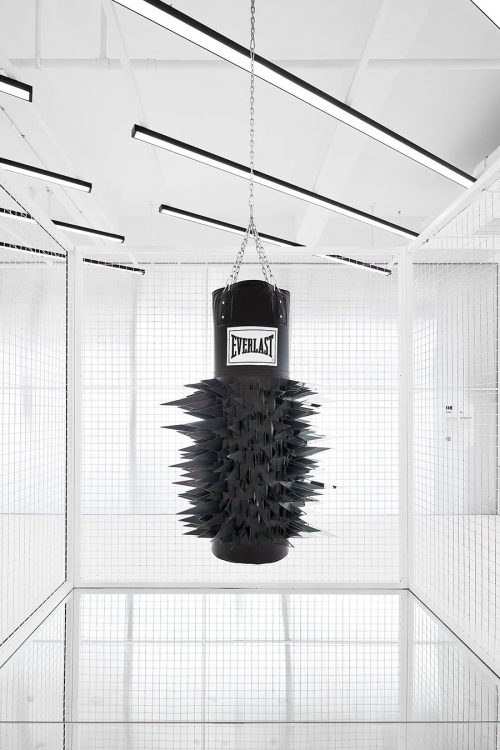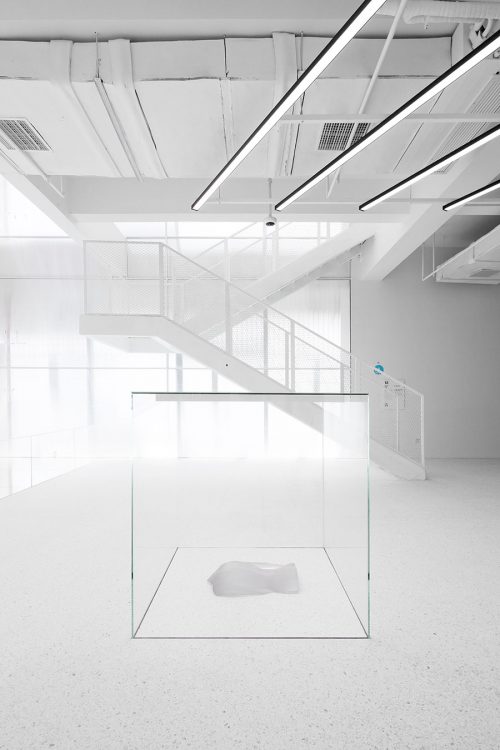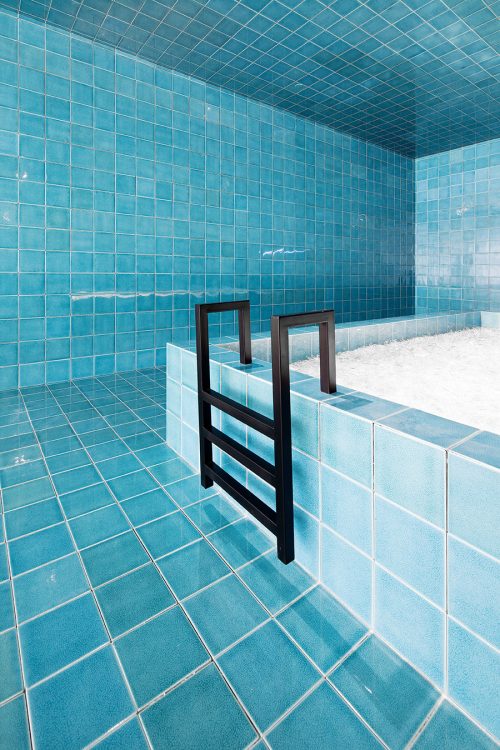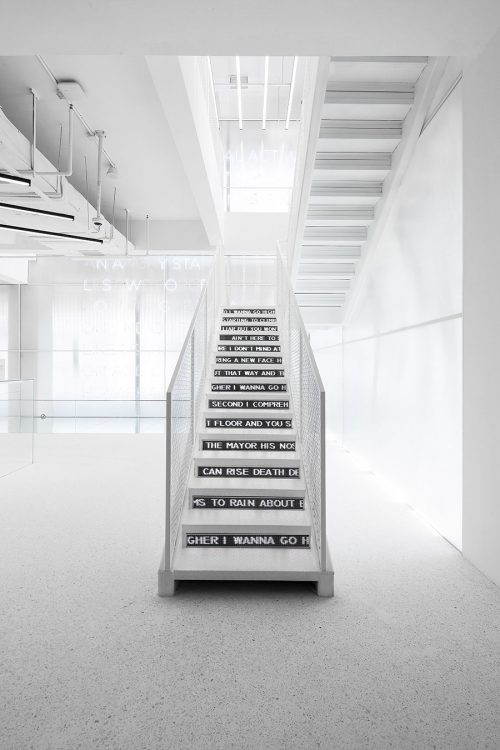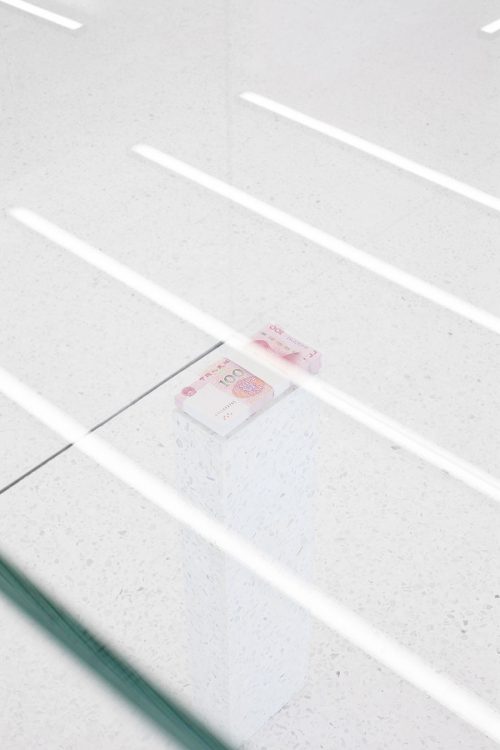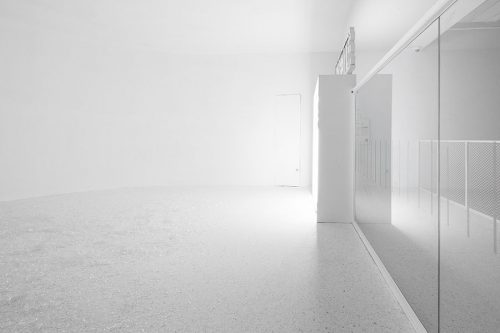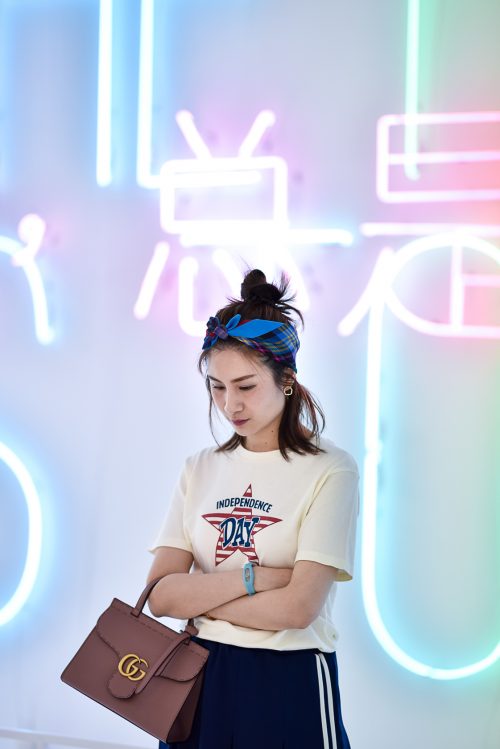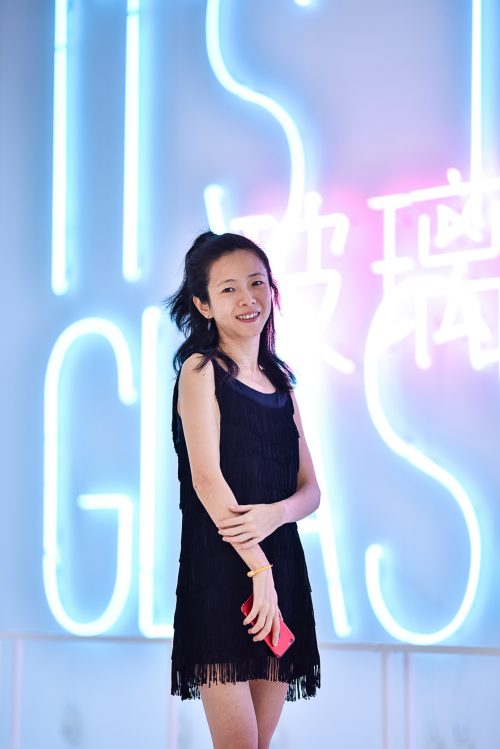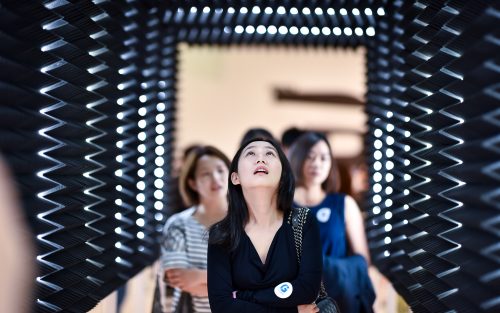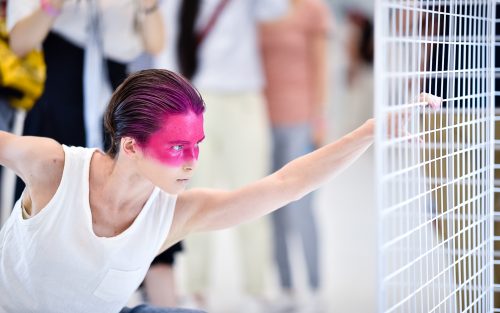破碎 BRKN
主办方:上海玻璃博物馆
策展人:迪尔曼·图蒙
开幕时间: 2018年6月23日
展览地点:上海玻璃博物馆园区12号展厅
Organizer: Shanghai Museum of Glass
Curator: Tilman Thürmer
Opening Date: June 23, 2018
Exhibition Venue: Hall 12, Shanghai Museum of Glass Park
关于展览 ABOUT EXHIBITION
玻璃,
总是要碎的
IT IS THE FATE
OF GLASS
TO BREAK
“玻璃,总是要碎的。”以这句谚语为出发点,展览“破碎”,将探索粉碎、破碎和破裂的事物,能如何道出心碎、希望,及两者之间的一切。展览呈现21项装置作品,将从不同的视角探索“破碎”的内涵、隐喻及无限可能性。所有作品均以玻璃为核心介质,并作为无数语言中最为强有力、并且反复出现的隐喻;此外作为另一个至关重要的元素,音乐,也将在展览中施展不容忽视的情感力量。
“破碎”一词往往会被用于描述一种带有终结含义的消极状态。比如,我们会倾向于丢弃破碎的东西,也会试图摆脱破裂的关系。而破裂的关系——无论友谊、爱情亦或信仰,都是本次展览的核心主题。此外,“心即是玻璃”的隐喻也将贯穿于整个展览。
心脏,这个象征着情感和理性中心的器官——其字面意义上的生命力量——代表了我们脆弱的情感纽带。因此,就像玻璃一样,它是脆弱的,需要小心呵护;同时,玻璃的透明质感也象征了心灵的理想化纯净特质。
在展览“破碎”中,情感上的裂痕与碎玻璃比喻的本体:心碎,将通过一系列极具想象力的装置作品所诠释,其中便包括了一件名为《脆弱》的墙面装置。在这一装置中,经灯工玻璃吹制而成的霓虹灯歌词被铺满了七米高的墙体,尤为引人注目的一点在于,其位于高墙上端的歌词完好无损,而处于下方的歌词却被逐渐地侵蚀和打破,并凌乱地散落于地面。
破坏的行为,不管是循序渐进、亦或极速突然,都需要通过力量、压力或者张力的作用来完成。作为展览“破碎”中最具有震撼力的展项之一,《牢不可破》将力量的二元性演绎为一辆疾驰的汽车——这个重达一吨的钢铁、橡胶和玻璃混合物——撞上了一根象征着坚固不屈的障碍物:一束空灵的光柱,猛然停了下来。作品旨在对权力的象征,以及我们周围世界中对立力量的二元性提出质疑。
作品《妈妈说别对你手软》同样表现了这种对抗和冲突的概念。这组作品通过传递出一场高强度拳击比赛的紧张气氛,探索了达到临界点的意义和结果。
对于“破碎”这个词的解读,在很大程度上取决于它所在的上下文语境关系。“破碎”有着彻底中断的意义,它既可以用于积极的成果,也可以用于消极的后果。而在作品《打破玻璃天花板》中,这里的“打破”便是指对“隐形障碍”的清除,它同时也代表了对正在进行中的工作场所性别平权运动的致敬。
破除旧有事物,也意味着新的事物的孕育。这种逻辑同样适用于玻璃:当它一旦破碎,就几乎没有可能恢复其原来的完整性。但是,尽管我们说“玻璃,总是要碎的”,破碎之后的玻璃可以被熔化、回收和重新利用,迎来一个新的篇章、新的开始。
作品《幸运符》作为展览的收尾作品,进一步诠释了这种破旧立新的双面性。作品邀请观众参与西方文化中的一项婚礼习俗:打碎玻璃杯。这一习俗体现了婚姻所代表的转折点,也象征着新开端的承诺。
此次在展览中呈现的所有作品均由上海玻璃博物馆独立创作,此外,展览丰富的非视觉元素:音乐,则作为一种饱含着玻璃隐喻的艺术媒介,或明确地使用了玻璃作为喻体,或传神地描述了玻璃的某些核心特质。这些或许耳熟能详的歌曲,将被赋予充满另类、甚至令人惊讶的解读。
展览“破碎”由上海玻璃博物馆设计总监迪尔曼·图蒙(Tilman Thürmer)担任策展人。作为在馆任职已十年有余的资深建筑师,迪尔曼把本次展览看作是一个契机,即在博物馆的语境中,考虑玻璃易碎的特质。“作为一名设计师和策展人,我发现碎玻璃在物理层面的意义,与‘破碎’广泛的隐喻可能性之间相互脱节,这是很有趣的。”他说,“这引发了我们团队中的许多真知灼见,也催化了这次展览的诞生。”
作为“国际玻璃创意设计展”(Keep it Glassy)的第三个系列,本次展览将邀请观众以另一种视角去审视他们周围的世界以及玻璃这种材质。自2011年开馆以来,上海玻璃博物馆不仅是一个玻璃创作的平台,更是一个致力于探索艺术、建筑和设计理念的空间,而所有的这一切,都与玻璃的无限可能性紧密关联。
“It is the fate of glass to break:” Taking this well-known proverb as its starting point, BRKN explores how things shattered, fractured and cracked can speak to heartbreak and hope, and everything in between. With glass as their core medium – a material whose inherent fragility renders it a potent and recurring metaphor in countless languages – as well as music, 21 installations explore the connotations, implications, and possibilities of broken.
Although nothing if not nuanced, the term ‘broken’ most commonly describes negative states, weighed with the implication of finality. We tend to discard broken things, for example, and try to walk away from broken relationships. Indeed, fractured alliances – be they of friendship, love or faith – are a central theme in this exhibition, with the metaphor of the heart as glass recurring throughout.
Our imagined center of love, reason and emotion, the organ – literally a lifeforce – represents the nexus of our weaknesses. Much like glass, it is fragile, and demands careful handling; while the material’s literal transparency mirrors the idealized purity associated with the heart’s spiritual affinities.
In BRKN, heartbreak is imagined through a series of installations that shine a light on these emotional associations of ‘broken.’ They include ‘Fragile,’ inspired by the eponymous anthem that has become synonymous with a call for compassion. Here, the song’s lyrics have been realized in mouth-blown neon – a delicate process calling for utmost care – on a seven-meter high wall. Those towards the top of the work are intact, with those at its lower reaches broken.
Whether gradual and slow or sudden and sharp, the act of breaking requires force, pressure and tension. In one of BRKN’s most striking installations, ‘Unbreakable,’ dichotomous forces are imagined by way of a speeding car – more than a ton of steel, rubber and glass – slammed to a halt, having collided against an unyielding obstacle: an ethereal beam of light. The work calls into question signifiers of power, and the duality of opposing forces in the world around us.
Also exploring this idea of confrontation and clash is ‘Mama Said Knock You Out,’ which applies the tension of a high-octane boxing match in order to examine the connotations and consequences of reaching breaking point.
Understandings of the term ‘broken’ depend very much on context, and its fundamental associations of discontinuity can speak as much to positive outcomes as to negative. In Breaking the Glass Ceiling, that means a tearing down of erstwhile invisible barriers, and the work nods to ongoing activism with regard to workplace gender equality.
The breaking down of what stood before holds promise for something new in its stead. This proposition is also shared by glass: once shattered, it is virtually impossible to restore to its former integrity. But although “It is the fate of glass to break,” once broken, it may be molten down, recycled and repurposed for a fresh chapter, and new beginnings.
The exhibition’s final work plays on this ambiguity to describe a break from the past, and the embarking on a new and different journey. Titled ‘Glücksbringer,’ it invites exhibition-goers to partake in a wedding tradition common to several world cultures: smashing glasses. A physical expression of the turning point marriage represents, it celebrates the promise of new beginnings.
Works on display, all created by Shanghai Museum of Glass, also comprise a non-visual element: music. A medium rich in glass metaphors, selected artists either expressly employ glass as an allegory, or eloquently describe certain of its qualities. In the context of both a museum, and of an art installation, these familiar songs are imbued with alternative, and sometimes surprising, interpretations.
BRKN is curated by Tilman Thürmer, Design Director of Shanghai Museum of Glass. A trained architect whose tenure at the institution extends more than a decade, he views the exhibition as an opportunity to consider a quality of glass that in a museum context is more dreaded than it is dissected. “As a designer and curator, the disconnect between the trauma of broken glass and what that means in a physical sense, versus the expansive metaphorical possibilities of ‘breaking,’ is interesting,” he said. “This was a starting point for many insightful conversations within our international team, and the catalyst for this show.”
The third edition of exhibition series, ‘Keep it Glassy,’ BRKN invites visitors to take an alternative look at the world around them, and at glass in particular. Since its inauguration in 2011, Shanghai Museum of Glass has served not just as a platform for creations in glass, but also as a space dedicated to exploring concepts in art, architecture and design, all hinged around the myriad possibilities of glass.
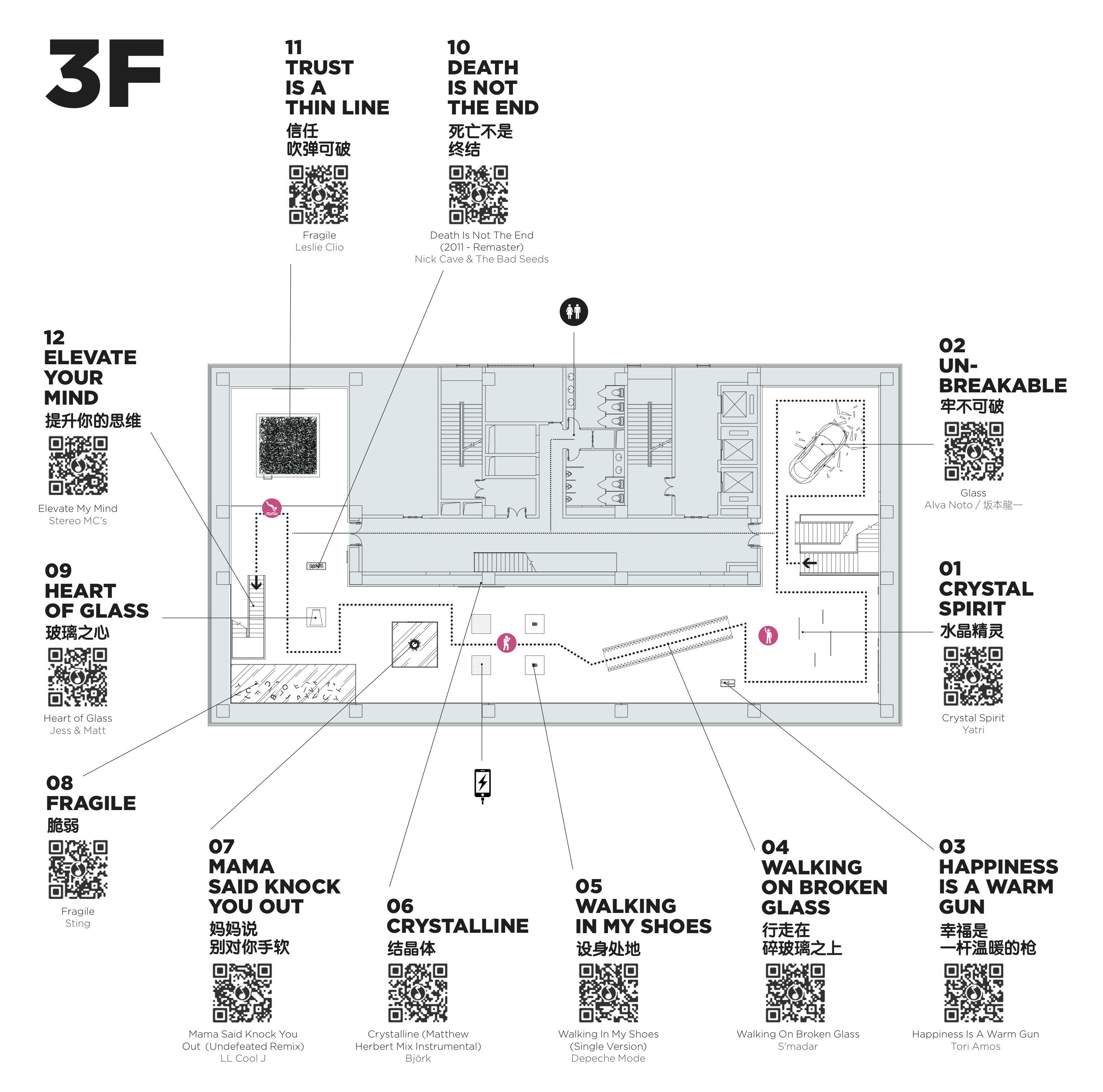

策展人说 Curator's Words

在过去的7年中,我们在上海玻璃博物馆园区中不断探索着玻璃的无限可能。遍览了玻璃这种材质几乎所有的特性,然而它所拥有的一个关键特性几乎被我们所遗忘—玻璃是很容易破碎的。它所拥有的弱点几乎与我们人类相同,展现了我们身而为人脆弱的一面。
在视觉层面上,展览以娱乐体验,照相胜地为导向,辅以众多经典音乐等待游客探索发掘。其中的音乐曾是整个展览最主要的灵感来源与引领者。——但如果进一步走近展览,用更为凝视的眼神来看待它,你会发现这个展览是关于信任,正直,友谊,勇气以及平等的讨论与态度。
For over seven years, we have been exploring the infinite possibilities of glass here at the Shanghai Museum of Glass. We have been looking into almost all characteristics of the material glass, but one key characteristic we left almost unnoticed – that glass can easily break. Glass has a vulnerability which is almost similar to us humans. It shows us how fragile we are.
On the surface the exhibition is a fun-driven, selfie- and photo-friendly show with lots of music to explore. Music which was a major source of inspiration and guidance. – On a second glance , when you look deeper, the exhibition is about trust, integrity, friendships, courage and equality.
For more information please go to our BRKN page on WeChat
更多展览资讯请参阅微信公众号BRKN专页




